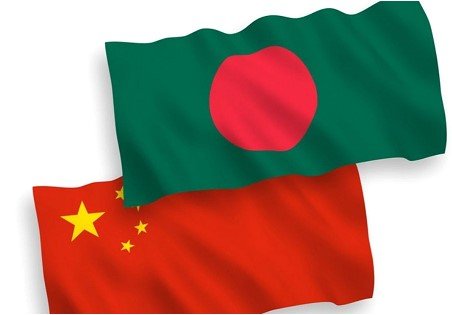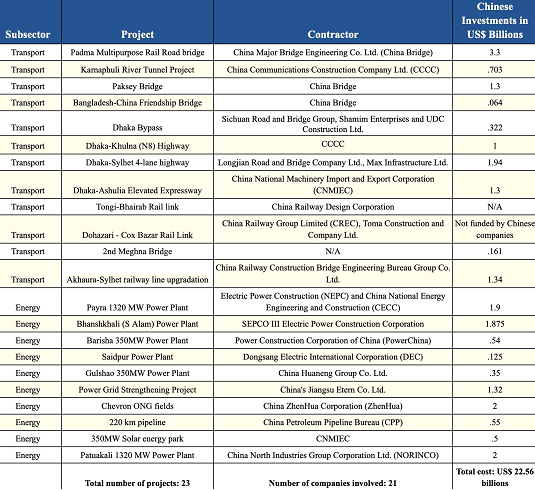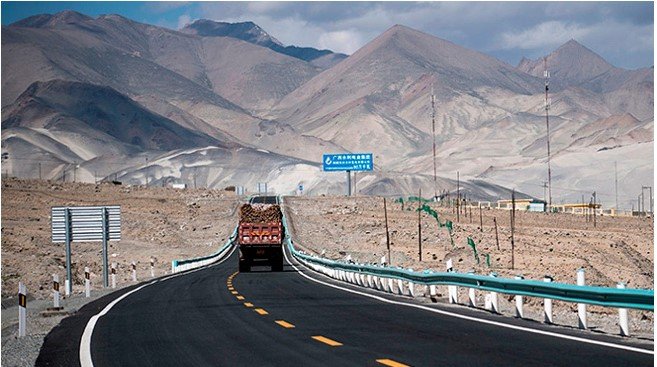The China-Bangladesh relationship, fueled by the transformative power of BRI investments, stands as a testament to the potential that collaborative efforts hold
The 21st century has witnessed China’s remarkable rise as a global economic powerhouse, accompanied by its ambitious foreign policy initiatives, including the Belt and Road Initiative (BRI). One of the prime beneficiaries of China’s expansive investment strategy is Bangladesh, a South Asian nation known for its resilience and potential. The symbiotic relationship between China and Bangladesh, facilitated by BRI investments, is poised to redefine economic landscapes and geopolitical dynamics. As China’s involvement deepens, a brighter future emerges for both nations, ushering in unparalleled cooperation and development.’
Understanding China BRI Investments
The Belt and Road Initiative (BRI) is a comprehensive development strategy launched by China in 2013. It aims to foster economic connectivity and cooperation by revitalizing ancient trade routes and establishing modern infrastructure networks across Asia, Europe, Africa, and beyond. This initiative comprises the Silk Road Economic Belt and the 21st Century Maritime Silk Road, collectively focusing on enhancing connectivity, trade, and investment among participating nations.
The Great Future of BRI Investments
China’s BRI investments offer a multitude of opportunities for participating countries, including Bangladesh. By upgrading transportation infrastructure, energy projects, and industrial parks, BRI investments facilitate increased trade, economic diversification, and sustainable growth. This infusion of capital and technology aligns with the aspirations of developing countries, propelling them towards a more prosperous and connected future.

China-Bangladesh: Forging a Strong Relationship
China’s engagements with Bangladesh have been characterized by a cooperative spirit, with shared interests serving as the foundation for deeper ties. The China-Bangladesh relationship has taken on new dimensions through the joint pursuit of the Vision 2041 strategy. Vision 2041 is Bangladesh’s comprehensive plan to transform itself into a developed and prosperous nation by its centenary year. China’s BRI investments complement this vision by offering crucial support in the form of infrastructure, technology, and strategic partnership.
China’s major projects in Bangladesh
China’s contributions to Bangladesh’s development are evident in several significant projects. The Padma Bridge, a vital infrastructure initiative, is being constructed with Chinese support, connecting the previously isolated regions and enhancing transportation networks. The Payra Power Plant, another testament to this collaboration, exemplifies how Chinese technology is helping Bangladesh address its energy deficit sustainably.

China’s government-run and private enterprises made close to US$26 billion in investments in Bangladesh between 2016 and 22. With investments exceeding US$1 billion in 2022—a rise of 30% from a value of US$700 million in 2021—Beijing became the nation’s largest source of FDI. More than 65 percent of FDI reported by the Bangladesh Investment Development Authority (BIDA) in both of these years also came from China.
You can also read: India’s Strong Apprehensions against US Policy before Bangladesh Election
As an illustration, Beijing built the Karnaphuli Tunnel, the first under-river traffic tunnel in South Asia. For the 34 million people who use the Dhaka-Chittagong-Cox’s Bazar highroads system, the tunnel improves traffic flow. The Dasherkandi Sewage Treatment Plant in Dhaka & the ‘Info-Sarkar’ ICT project, which connects 2,500 government offices centrally, are two other significant projects Beijing has accomplished.
In addition to these initiatives, China spent approximately 800 million dollars in Bangladesh in 2023 alone. These include the $500 million US Plasma Centre in Dhaka, which is led by Sinovac Biotech Ltd., the US$200 million plan to build Bangladesh’s largest glass factory by Xinyi Glass, and the luxury clothing investments made by SSH and Kaixi.
Bangladesh: China’s presence is growing currently
China’s growing presence in Bangladesh extends beyond physical infrastructure. The economic partnership has resulted in increased trade, with China being one of Bangladesh’s largest trading partners. Moreover, joint ventures in the technology sector are paving the way for knowledge-sharing and skill development, fostering a mutually beneficial exchange.
The economic integration of China is still taking place in Bangladesh. More than 50% of the domestic electricity in the nation is produced by the 27 energy & power generation endeavors it has created, including 21 bridges, 11 highways, seven railway lines, and 550 km of roadways. In addition, Beijing is funding 90% of Bangladesh’s new energy projects. In addition to making physical investments, the Shanghai & Shenzhen stock exchanges in China also bought a 25% ownership in the Dhaka stock market, which is the biggest trading venue in Bangladesh. Additionally, three gas reserves in Bangladesh that produce more than half of Bangladesh’s gas for domestic consumption have been purchased by Chinese state businesses. China has quickly saturated Bangladesh’s economy with significant investment inflows.
Beijing’s Influence in Dhaka: Diplomatic Shifts
In addition to offering financial support, Beijing has played a crucial role in assisting Dhaka to resist Western pressures. When the World Bank withdrew funding from the Padma Multipurpose Bridge project in 2013 due to corruption concerns, China stepped in as the financier. Over a decade later, the Bangladeshi government allowed China to label the Padma Bridge, along with 20 other bridges and 11 motorways, as part of the BRI in South Asia, despite objections from India. This alignment with Beijing has been reinforced by political constraints and Western estrangement, such as its exclusion from the Global Democracy Summit in 2021.
Mission 2041 and BRI: A Synergistic Approach
Vision 2041 envisions Bangladesh as a hub of economic growth, technological innovation, and regional connectivity. China’s BRI investments act as a catalyst for realizing this vision by providing the necessary tools for infrastructure development, trade facilitation, and industrial expansion. The convergence of these two strategic frameworks underscores the commitment of both nations to elevate their relationship to new heights.
With the signing of 26 Memorandums of Understanding (MoU) with Dhaka in 2016, China officially included Bangladesh in the BRI, its leading global infrastructure initiative. PM Sheikh Hasina later said in a discussion with Chinese Vice-Minister for Foreign Affairs Sun Weidong that a “developmental” partnership with Beijing will improve Bangladesh’s ability to realize “Vision 2041,” a 20-year plan to turn Bangladesh into a developed country by reducing poverty, sustaining economic growth, and achieving energy independence. According to the development plan, Dhaka will need to raise US$ 1.7 billion annually to pay for its transformation, a huge sum for a developing economy. Although Bangladesh’s economy has been growing steadily over the past ten years, limited access to energy and weak regional connectivity has kept Bangladesh’s economy from reaching its full potential.
The China-Bangladesh relationship, fueled by the transformative power of BRI investments, stands as a testament to the potential that collaborative efforts hold. As China’s influence expands and its investments flourish, Bangladesh emerges as a crucial partner in this global initiative. The mutual benefits are palpable, from upgraded infrastructure to enhanced trade opportunities. The synergy between China’s BRI and Bangladesh’s Vision 2041 exemplifies the harmonious convergence of aspirations, carving a path toward shared prosperity and growth. In a world that thrives on partnerships, China and Bangladesh are demonstrating how cooperation can shape the destiny of nations.


